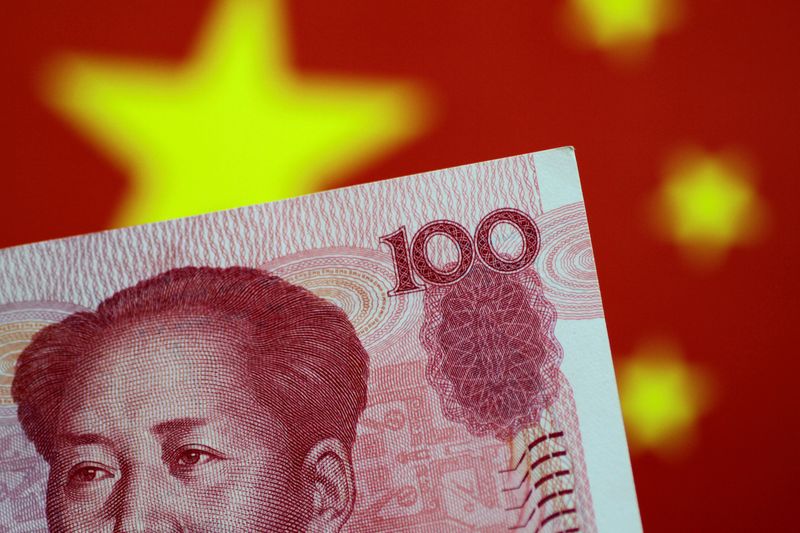Forex
China to lower dollar, euro weightings in CFETS yuan basket index in 2024


© Reuters. A China yuan note is seen in this illustration photo May 31, 2017. REUTERS/Thomas White/Illustration/File Photo
BEIJING (Reuters) -China will adjust the weightings of two key yuan index baskets in 2024, the country’s foreign exchange trade platform said on Friday, to better reflect trade patterns.
From Jan. 1, the China Foreign Exchange Trade System (CFETS), which is overseen by the central bank, will lower the U.S. dollar’s weighting in the CFETS currency basket to 19.46% from 19.83% and cut the euro’s weighting to 18.08% from 18.21%, according to an online statement.
The adjustments will “further enhance the representativeness of the yuan currency basket index,” CFETS said in the statement.
China lowered weightings for the dollar and euro in the CFETS basket in 2023.
Such adjustments are unlikely to create sharp volatility in yuan trades, but they may affect the setting of the yuan’s official daily midpoint fixing, which caps the spot trade in a narrow range of 2% around that level, market watchers said.
The CFETS index finished the year at 97.42, down 1.27% this year, according to Reuters calculation based on official data. During the same period, the has lost 2.7% to the dollar and looks set for the second straight yearly drop. [CNY/]
China has adjusted the CFETS basket multiple times since it introduced the trade-weighted yuan index in December 2015 to better reflect external trade conditions.
In addition, the CFETS said it would also tweak BIS currency basket RMB index after the Bank for International Settlements (BIS) adjusted currency weightings at the start of this year.
In detail, CFETS will remove the Croatian kuna while adding the Bosnian marka, Moroccan dirham, North Macedonian denar, and Serbian dinar to the basket.

 Forex3 years ago
Forex3 years agoForex Today: the dollar is gaining strength amid gloomy sentiment at the start of the Fed’s week

 Forex3 years ago
Forex3 years agoUnbiased review of Pocket Option broker

 Forex3 years ago
Forex3 years agoDollar to pound sterling exchange rate today: Pound plummeted to its lowest since 1985

 Forex3 years ago
Forex3 years agoHow is the Australian dollar doing today?

 Cryptocurrency3 years ago
Cryptocurrency3 years agoWhat happened in the crypto market – current events today

 World3 years ago
World3 years agoWhy are modern video games an art form?

 Commodities3 years ago
Commodities3 years agoCopper continues to fall in price on expectations of lower demand in China

 Economy3 years ago
Economy3 years agoCrude oil tankers double in price due to EU anti-Russian sanctions


























